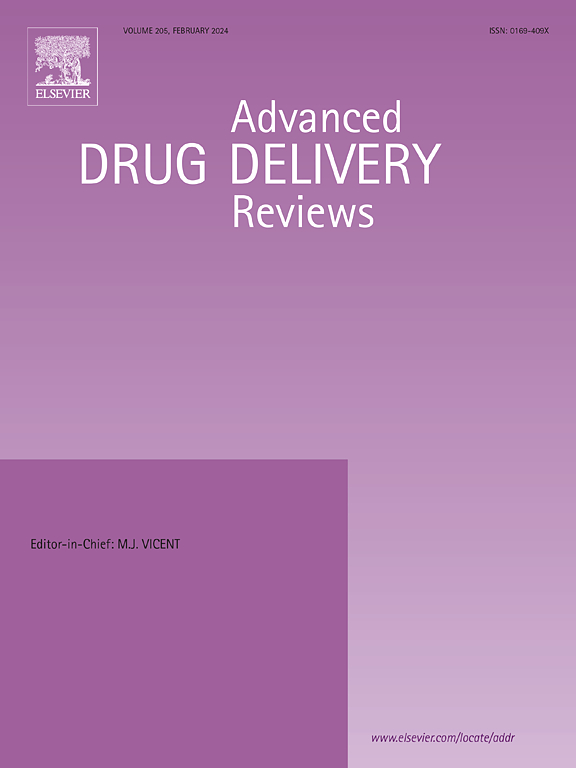Optical coherence tomography for noninvasive monitoring of drug delivery
IF 17.6
1区 医学
Q1 PHARMACOLOGY & PHARMACY
引用次数: 0
Abstract
Optical Coherence Tomography (OCT) has revolutionized various medical imaging and diagnostics fields, offering unprecedented insights into the microstructural compositions of biological tissues. In recent years, OCT applications have been extended to noninvasive drug delivery monitoring, which is a critical aspect of many therapeutic procedures and pharmacokinetic studies. Such an extension is strongly enhanced by the inherent combination with 3D anatomical images provided by OCT. This review presents an overview of the principles of OCT technology, its functional extensions for drug delivery systems, and its advancements in monitoring therapeutic interventions. We discuss its advantages over traditional imaging modalities in terms of spatial resolution, depth penetration, and real-time capabilities. The paper highlights significant studies that have utilized OCT for the visualization and quantification of drug delivery processes, including the diffusion of injectable formulations in ocular tissues and the permeation of topical drugs through the skin. In the review, we focused on the latest OCT applications, including OCT-guided drug injection, topical drug delivery monitoring, application of OCT in inhaled drug delivery systems, and the integration of OCT with other imaging modalities.


光学相干断层扫描无创监测给药
光学相干断层扫描(OCT)彻底改变了各种医学成像和诊断领域,为生物组织的微观结构组成提供了前所未有的见解。近年来,OCT应用已扩展到无创给药监测,这是许多治疗程序和药代动力学研究的关键方面。OCT提供的三维解剖图像增强了这种扩展。本文综述了OCT技术的原理,它在药物输送系统中的功能扩展,以及它在监测治疗干预方面的进展。我们讨论了它在空间分辨率、深度穿透和实时能力方面比传统成像方式的优势。本文重点介绍了利用OCT对药物传递过程进行可视化和量化的重要研究,包括可注射制剂在眼部组织中的扩散和局部药物通过皮肤的渗透。本文综述了OCT的最新应用,包括OCT引导药物注射、局部给药监测、OCT在吸入给药系统中的应用以及OCT与其他成像方式的融合。
本文章由计算机程序翻译,如有差异,请以英文原文为准。
求助全文
约1分钟内获得全文
求助全文
来源期刊
CiteScore
28.10
自引率
5.00%
发文量
294
审稿时长
15.1 weeks
期刊介绍:
The aim of the Journal is to provide a forum for the critical analysis of advanced drug and gene delivery systems and their applications in human and veterinary medicine. The Journal has a broad scope, covering the key issues for effective drug and gene delivery, from administration to site-specific delivery.
In general, the Journal publishes review articles in a Theme Issue format. Each Theme Issue provides a comprehensive and critical examination of current and emerging research on the design and development of advanced drug and gene delivery systems and their application to experimental and clinical therapeutics. The goal is to illustrate the pivotal role of a multidisciplinary approach to modern drug delivery, encompassing the application of sound biological and physicochemical principles to the engineering of drug delivery systems to meet the therapeutic need at hand. Importantly the Editorial Team of ADDR asks that the authors effectively window the extensive volume of literature, pick the important contributions and explain their importance, produce a forward looking identification of the challenges facing the field and produce a Conclusions section with expert recommendations to address the issues.

 求助内容:
求助内容: 应助结果提醒方式:
应助结果提醒方式:


